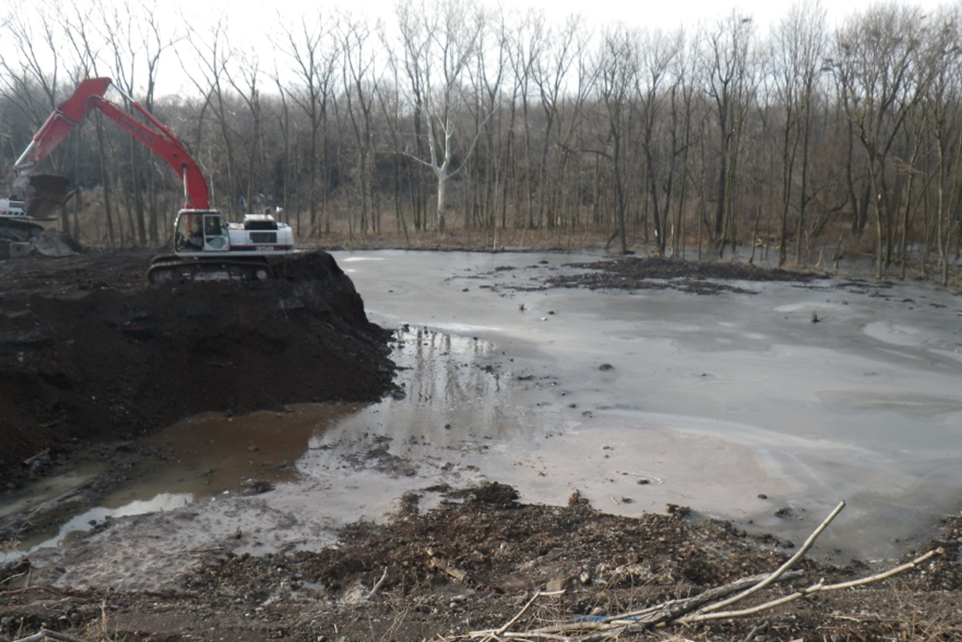Lower Black River Heron Rookery Restoration


The Lower Black River Heron Rookery Restoration Project was funded by a $250,000 GLRI grant, which was awarded to the City of Lorain in 2012. The grant funded the removal of steel mill processing byproducts (slag) historically disposed of in the project area, reconnection of the floodplain, and restoration of the area.
Several decades ago, a 30-foot-tall pile of slag was disposed of along the Black River, eliminating important floodplain habitat and contributing to water quality concerns in the Black River. After acquiring this former steel manufacturing property, the City began the daunting task of addressing the environmental issues left behind. Through implementation of this project, over 102,000 cubic yards of steel mill slag were removed from a 4-acre area adjacent to the existing heron rookery. The removal of the material has addressed water quality concerns and reconnected the area to the 100-year floodplain, increasing the floodplain capacity of the Black River.
Restoration following the slag removal included a soil amendment procedure designed to encourage the development of a floodplain forested wetland. The process involved placement of topsoil, “ripping” the existing subsoil and topsoil, tilling in triple-shredded hardwood compost, and placement of mixed leaf and grass compost.
Plantings were installed following the soil preparation. The plantings included the placement of four acres of native seed, and the installation of 500 native trees, 1,000 native shrubs, and over 1,100 wetland herbaceous plugs. Portions of the site are developing into floodplain wetlands, and other areas support a mixed vegetation community. Care was taken during all phases of the project to avoid impacting nesting great blue herons, who use the rookery each year. Bald eagles have been observed in the area as well.
Planning
Biological Assessments
Technical Reviews
Construction Oversight
Monitoring
Vegetation Management
Grant Administration
Public Outreach